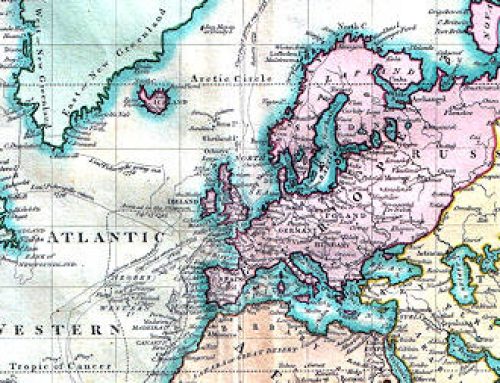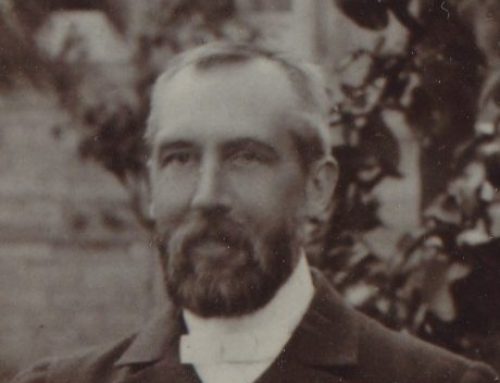The majority of surnames in England gradually came into being in the centuries following the Norman invasion in 1066, and initially only a few prominent families would have used them. People were instead known by a personal name together with a description of, for example, their employment, a place (either settlement or a geographical feature), the name of their father, or maybe some physical description of the individual. The same person might be referred to in more than one way.
In time, the population adopted surnames, passed on from generation to generation. As with the earlier descriptive elements, the most common sources for surnames are professions and jobs, place names and features of the landscape, and male first names.
Tusting is a modified spelling of Tustin adopted by just one branch of the latter family. Tustin is a surname which survives today, and is significantly more prevalent than Tusting. The name is a patronymic (i.e. derived from a male first name, generally the person’s father), originating from the Old Norse ‘ƿorsteinn’ (Thorsteinn, meaning Thor’s stone). It appears that this name, on arrival in England from Scandinavia, gave rise to names such as Thorsten, which might become the surname Thurston at a later date. Other Scandinavians migrated to areas such as modern day France, where the name became forms such as Toustin and Turstin. When they arrived in England, the latter forms became, in time, the surname Tustin.
Tustin/Tusting is thus derived from a male first name of Scandinavian origin brought to this country by the ‘Normans’ rather the ‘Vikings’.
An interesting glimpse is afforded by the Domesday Book (using the modern English translation paperback version). In this version the first name Turstin appears not infrequently in various parts of the country. It is landholders that are mentioned, and landholding rather than individuals that form the basis of each entry, and it is clear that there are multiple entries relating to the same person. It is, though, equally apparent that many different people with this name are mentioned. Often the name given is just Turstin, but many with identifying descriptions can be found, for example Turstin the priest, Turstin de Gironde, Turstin fitzRolf (son of Rolf), and Turstin Rufus (presumably red-haired) . There is, of course, no evidence indicating links to current day holders of the surname.
It is possible that all individuals with an uncommon surname may be descended from a single ancestor, but they could also be derived from multiple ancestors (in our case these might not be related to each other, but all have a father called Turstin or Tustin).
In the 17th and into the 18th century it appears that the Tustin surname (and random spelling variants) was most common in Worcestershire, spreading to adjacent counties, with much smaller concentrations in a few other locations, including Nottinghamshire/ Lincolnshire. This sort of analysis can be skewed by the availability of records. In more recent times the Tustin surname has become more widely spread, but is still notably more prevalent in Worcestershire, Warwickshire and surrounding counties than elsewhere. It has spread to the nearby Birmingham conurbation, where it is more common than in London (which has a larger population).
However, the Tusting family tree derives not from here, but from Nottinghamshire. By the early 1600’s there was at least two Tustin families in the county, both in the parish of Marnham close to the River Trent and the border with Lincolnshire. It cannot be established so far what the relationship (if any) is with families in the Worcestershire area. However there are at least a couple of references indicating that individuals with the first name Turstin or similar were living not far from Marnham in the late 12th century, so it is possible the name sprang up locally in this area.
One of these Marnham families grew and spread out to nearby parishes in Nottinghamshire and Lincolnshire. During the course of this expansion, one branch became known as Tusting from the late 17th century/early 18th century. At first this spelling appears sporadically and inconsistently in the record, but within a couple of generations all offspring from this branch are recorded as Tusting, and this has lasted to the present day.
From Lincolnshire some branches of the Tusting family spread to other areas. Many of these have died out, including the Lincolnshire branch, and there are also now only a handful of individuals with the Tustin surname remaining in Nottinghamshire or Lincolnshire. Today the main branches of the Tusting family are in Bedfordshire and Northamptonshire, Norfolk and London, with a small branch in California, U.S.A., and a small number of individuals elsewhere.
The name has sometimes been used as a middle name (occasionally a first name) in female lines descended from the Tusting family. Exceptionally, one such usage from the 18th century was continued through many generations into the 20th century, and this is the source of the name Tusting in Australia.
Michael Sasse
12th August 2015




